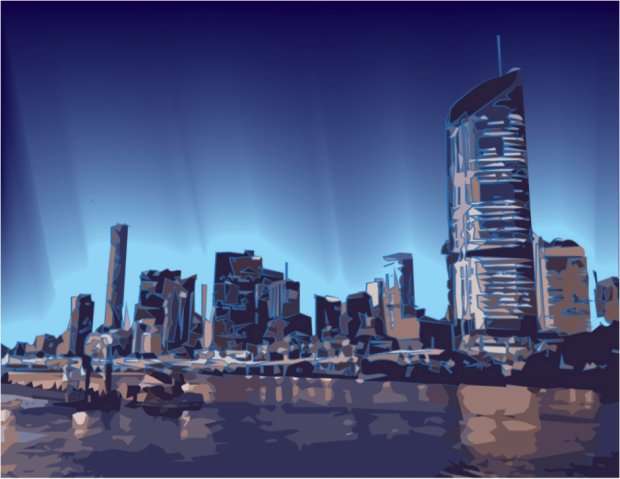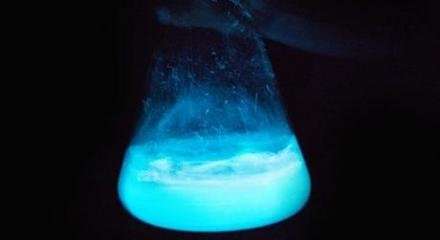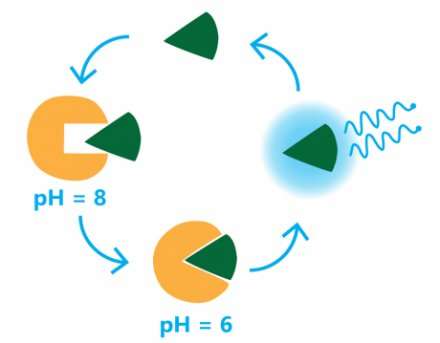Future cities could be lit by algae

The way we produce light has changed surprisingly little since Thomas Edison developed the first light bulb in 1879.
The LED-bulb has recently reduced electricity costs significantly, but they still use the same power source and continue to contribute to global warming since most electricity still comes from burning fossil fuels.
We need a new method to produce light that instead of using conventional electricity uses nature's own energy.
In the US a few dedicated researchers have been investigating bioluminescent algae for some years, but they have never successfully mapped the whole bioluminescent system within the algae. At the Technical University of Denmark (DTU), we are conducting the first Danish research in this area, and it shows that bioluminescent organisms could one day light up our cities in a turquoise blue light.
There are however, some clear challenges to solve before this becomes a reality. We may need to transfer genes from bioluminescent organisms into other green organisms, perhaps higher plants that will be able to emit light more effectively.
Microalgae illuminate the dark
Algae is found everywhere on land and in the sea, and are immensely important for life as we know it.
Many people associate algae with seaweed (macroalgae), but in fact most algae are micro algae. These algae are so small that you can only see them through a microscope.
Some of them, so-called dinoflagellates, emit a strong blue light at night. This phenomenon is known as bioluminescence, whereby living organisms produce light via chemical reactions.
You can see it yourself at certain times of the year in warmer climates, around the equator from Brazil to Australia.

Two molecules meet and produce light
Even though people have observed this phenomenon in the ocean for more than 2,500 years, we still know surprisingly little about the algae involved and how they produce light.
The algae emit a blue light when they are shaken. Such as, when a predator swims by creating a current, or when the algae are hit by waves in coastal waters.
Two molecules are particularly important for light production: Luciferase (an enzyme) and luciferin (a molecule produced by photosynthesis).
When algae register a disturbance, a chain of cellular chemical processes is set in motion causing the pH to drop. This activates the luciferase enzymes, which bind to the luciferin and transfer energy to the luciferin via a process known as oxidation. It is the release of energy from luciferin we see as blue light.
It has so far only been shown theoretically and not by experiment.
Biological solar cell and living lamp in the same organism
The bioluminescent algae need energy to emit light, just like your bedside lamp that plugs into a power socket to access electricity. Algae though, get their energy from another source: The Sun.
They use sunlight to produce energy via photosynthesis to carry out a whole range of processes at the cellular level.
You can imagine algae as tiny individual lamps, powered by a solar cell. They 'recharge' during the day so they can emit their blue light throughout the night.

There are a number of bioluminescent animals, fungi, and bacteria. All of them require food to produce energy needed to illuminate. Algae exploit sunlight and carbon dioxide (CO2): Two inexhaustible, environmentally friendly, CO2-neutral sources of energy.
Sustainable cities with living light
We use a large proportion of electricity to light our homes, roads, car parks and so on. This electricity largely comes from the burning of fossil fuels, which increases the amount of CO2 in the atmosphere and drives global warming. Therefore, we need a more sustainable source of light.
Microalgae grow in saltwater, but as long as they grow in a closed container they can function as a biological lamp, which could be used as bulbs to illuminate our cities, shop windows, buildings, roads, and carparks.
Bioluminescent algae are the first stage in the development of biological light, but there are some clear challenges when using algae in a lamp. Algae need to be disturbed into motion before they illuminate, which is problematic in a lamp. Moreover, they only illuminate for a relatively short period because of energy limitation.
More research needed to develop bio-lamps
To produce biological lamps that can illuminate throughout the night without movement means that we need to think along entirely new lines.
Right now, we are trying to figure out precisely which genes are used to emit light and then transfer these genes to other photosynthetic organisms to produce a bioluminescent plant that can emit light all night long.
We are not there yet and it will take many years of research. But just imagine, stepping out into a city in the future bathed in a blue light produced by plants.
Provided by ScienceNordic
This story is republished courtesy of ScienceNordic, the trusted source for English-language science news from the Nordic countries. Read the original story here.





















